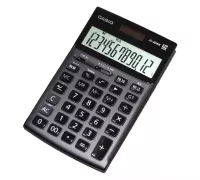A watch is a portable timepiece designed to maintain accurate timekeeping despite movement. Wristwatches are worn on the wrist with straps or bracelets, while pocket watches are carried in a pocket, often with a chain. Stopwatches are a specialized type of watch used for measuring time intervals.
1902: Mappin & Webb accelerates campaign watch production
In 1902, Mappin & Webb accelerated production of their successful "campaign watch" for soldiers during the Second Boer War.
1903: Dimier Frères & Cie patents wristwatch design
In 1903, Dimier Frères & Cie, a Swiss company, patented a wristwatch design with the now standard wire lugs.
1904: Louis Cartier produces wristwatch for Alberto Santos-Dumont
In 1904, Louis Cartier produced a wristwatch for his friend Alberto Santos-Dumont to allow him to check flight performance in his airship.
1905: Hans Wilsdorf sets up Wilsdorf & Davis
In 1905, Hans Wilsdorf moved to London and established Wilsdorf & Davis with Alfred Davis, offering quality timepieces at affordable prices.
1914: World War I impacts wristwatch perceptions
The First World War of 1914 dramatically shifted public perceptions of men's wristwatches and opened a mass market in the postwar era.
1915: Wilsdorf & Davis becomes Rolex
In 1915, Wilsdorf & Davis changed its name to Rolex.
1917: UK War Office issues wristwatches to combatants
In 1917, the UK War Office began issuing wristwatches to combatants during World War I.
1918: Wristwatch adoption among enlisted men
By the end of World War I in 1918, almost all enlisted men wore wristwatches, leading to a fashion trend after demobilization.
1923: John Harwood invents the automatic wristwatch
In 1923, British watch repairer John Harwood invented the first "self-winding", or "automatic", wristwatch.
1923: John Harwood invents self-winding system
In 1923, John Harwood invented the first successful self-winding system for watches.
October 1930: Glycine incorporates self-winding module into watches
In October 1930, Glycine began mass-producing automatic watches by incorporating a self-winding module into its watches.
1930: Wristwatch market share exceeds pocket watch
By 1930, the wristwatch vastly exceeded the pocket watch in market share by a ratio of 50:1.
1954: Raketa Atom, the first geiger counter watch
In 1954, the Raketa Atom became the first known example of watches with built-in geiger counters.
January 1957: Hamilton releases the Hamilton 500 electric watch
On January 3, 1957 Hamilton released the Hamilton 500 electric watch, the first model, that was produced into 1959.
1957: Hamilton Electric 500 released
In 1957, the Hamilton Watch Company of Lancaster, Pennsylvania released the first electrically powered watch, the Hamilton Electric 500.
1959: Seiko orders development of quartz wristwatch with Epson
In 1959, Seiko placed an order with Epson to develop a quartz wristwatch, codenamed project 59A.
1959: Hamilton ceases production of the Hamilton 500
In 1959, production of the Hamilton 500 ceased due to issues with contact wire misalignment in the electric watch model.
1960: Bulova introduces tuning-fork watches
In 1960, Bulova introduced tuning-fork watches, which use an electromechanical movement with a precise frequency to drive a mechanical watch.
March 1961: First Watch in Space
In March 1961, a Russian "Pobeda" watch was sent into space on the Korabl-Sputnik 4 attached to the wrist of a dog named Chernuchka.
April 1961: Gagarin Wears Shturmanskie in Space
On April 12, 1961, Yuri Gagarin wore a Shturmanskie wristwatch during his historic first flight into space.
May 1962: Breitling Navitimer Cosmonaute Worn in Space
On May 24, 1962, the Breitling Navitimer Cosmonaute was first worn in space by U.S. astronaut Scott Carpenter in the Aurora 7 Mercury capsule.
1964: Seiko provides quartz watch prototypes for Tokyo Summer Olympics
By the 1964 Tokyo Summer Olympics, Seiko had a working prototype of a portable quartz watch which was used as the time measurements throughout the event.
1964: Seiko timekeeping devices at the Tokyo Olympics
In 1964, Seiko's timekeeping devices at the Tokyo Olympics were portable quartz watches, not wristwatches.
1964: First Moscow Factory Marked by "POLJOT" Trademark
Since 1964, the watches of the First Moscow Factory have been marked by the trademark "Полёт", transliterated as "POLJOT", which means "flight" in Russian and is a tribute to the many space trips its watches have accomplished.
1965: CEH begins pioneering development work
From 1965, CEH research laboratory in Neuchâtel, Switzerland pioneered development work on a miniaturized 8192 Hz quartz oscillator and thermo-compensation module.
1965: Breitling Top Time Featured in Thunderball
In 1965, a modified Breitling Top Time geiger counter watch was used in the James Bond movie Thunderball.
1967: BETA 1 sets timekeeping performance records
In 1967, the BETA 1 prototype set new timekeeping performance records at the International Chronometric Competition held at the Observatory of Neuchâtel.
1968: Waterproof Watch Advertising Banned in the US
In 1968, advertising a watch as waterproof became illegal in the United States due to Federal Trade Commission regulations.
December 1969: Seiko 35 SQ Astron hits the shelves
On December 25, 1969, the Seiko 35 SQ Astron became the first quartz watch to enter production and hit the shelves, quickly followed by the Swiss Beta 21.
1969: Omega Speedmaster on the Moon
In 1969, Buzz Aldrin wore the Omega Speedmaster Professional during the Apollo 11 Moon landing.
1969: Seiko Astron 35SQ quartz watch introduced
In 1969, the Seiko Astron 35SQ was commercially introduced, marking a revolutionary improvement in watch technology with the use of a quartz-crystal resonator.
1970: Manufacturers exhibit beta 21 wristwatch production versions
In 1970, 18 manufacturers exhibited production versions of the beta 21 wristwatch, including the Omega Electroquartz, Patek Philippe, Rolex Oysterquartz and Piaget.
1970: Omega Beta 21 quartz watch introduced
In 1970, the Omega Beta 21 quartz watch was introduced, using a quartz-crystal resonator.
April 1972: Pulsar Watch Release
On April 4, 1972, the Pulsar watch, the first digital electronic watch, was released in an 18-carat gold case and sold for $2,100. It featured a red light-emitting diode (LED) display.
1972: Early LCD Watches Marketed
In 1972, various early LCD watches with a four-digit display were marketed, including the Gruen Teletime LCD Watch and the Cox Electronic Systems Quarza. The Quarza featured the first Field Effect LCD readable in direct sunlight.
March 1973: Ebauches Electronic SA presents LCD Wristwatch prototype
In March 1973, Ebauches Electronic SA presented a prototype eight-digit LCD wristwatch showing time and date at the MUBA Fair, Basel, using a twisted nematic LCD manufactured by Brown, Boveri & Cie, Switzerland.
1974: Casio adopts Brown, Boveri & Cie LCD for CASIOTRON watch
In 1974, Casio adopted the twisted nematic LCD manufactured by Brown, Boveri & Cie, Switzerland for the CASIOTRON watch.
1975: Sinclair Radionics' Black Watch Fails
In 1975, Sinclair Radionics' Black Watch faced production problems and high return rates, leading to the cessation of production.
1975: Texas Instruments Mass Produces LED Watches
In 1975, Texas Instruments began mass-producing LED watches in plastic cases, retailing for $20.
1976: Texas Instruments Slashes LED Watch Price
In 1976, Texas Instruments reduced the price of their LED watches to $10, leading to a loss of $6 million for Pulsar and the subsequent sale of the Pulsar brand to Seiko.
1982: Seiko TV Watch and Casio Thermometer Watch Released
In 1982, Seiko produced the Seiko TV Watch with a built-in television screen, and Casio released a digital watch with a thermometer (the TS-1000).
1983: Swatch brand launched
In 1983, the new SWATCH brand was launched, marked by bold new styling, design, and marketing.
1985: Casio Introduces Scientific Calculator Watch
In 1985, Casio produced the CFX-400 scientific calculator watch.
1987: Casio and Citizen Release Advanced Watches
In 1987, Casio produced the DBA-800 watch that could dial telephone numbers, and Citizen introduced a voice-reactive watch.
1994: Timex Datalink wristwatch introduced
In 1994, the Timex Datalink wristwatch was introduced, featuring a wireless data transfer mode to receive data from a PC.
1994: Fortis Becomes Exclusive Supplier for Russian Space Missions
Since 1994, Fortis has been the exclusive supplier for crewed space missions authorized by the Russian Federal Space Agency.
1995: Timex Releases Data Storage Watch
In 1995, Timex released a watch that allowed users to download and store data from a computer to their wrist.
1999: Seiko Spring Drive introduced in domestic market
In 1999, Seiko introduced the Spring Drive, combining quartz and mechanical movements, in a limited domestic market production.
September 2005: Seiko Spring Drive released worldwide
In September 2005, Seiko's Spring Drive, a combination of quartz and mechanical movements, was released to the world.
2008: Seiko Announces Spring Drive Spacewalk
At BaselWorld 2008, Seiko announced the creation of the first watch designed specifically for a spacewalk, the Spring Drive Spacewalk.
2010: Miyota introduces new quartz movement
In 2010, Miyota (Citizen Watch) of Japan introduced a newly developed movement that uses a 3-pronged quartz crystal exclusively for Bulova's Precisionist or Accutron II line.
April 2013: Swatch Group launches sistem51 wristwatch
In April 2013, the Swatch Group launched the sistem51 wristwatch, which has a mechanical movement consisting of only 51 parts and a novel self-winding mechanism.
July 2013: Eone Timepieces launches 'Bradley' tactile wristwatch
On July 11, 2013, Eone Timepieces launched its first tactile analog wristwatch, the "Bradley", via Kickstarter, designed primarily for sight-impaired users.
Mentioned in this timeline
The United States of America is a federal republic located...

An electronic calculator is a portable electronic device designed for...

Buzz Aldrin is an American former astronaut engineer and fighter...
Japan is an East Asian island country situated in the...
Pennsylvania is a U S state located in the Mid-Atlantic...

World War I a global conflict between the Allies and...
Trending

6 months ago Jennifer Garner and John Miller share passionate kiss; Ben Affleck spotted solo.

Matthew Vincent Milano is an American football linebacker who currently plays for the Buffalo Bills in the NFL His college...

9 months ago Lane Johnson Secures One-Year Extension with Eagles Through 2027, Boosting His Pay.

16 days ago NFL Week 13 Predictions: Caleb Williams Impact and Key Matchup Insights Revealed

6 months ago Pete Carroll envisions Jeanty & Mostert as 'Thunder and Lightning' in Raiders backfield.

1 month ago Travis Etienne's Week 9 Fantasy Outlook: Start or Sit Him Against the Raiders?
Popular

Candace Owens is an American conservative political commentator and author...

Ilhan Omar is an American politician currently serving as the...

XXXTentacion born Jahseh Dwayne Ricardo Onfroy was a controversial yet...

Tom Cotton is an American politician and Army veteran currently...

Kelsey Grammer is an accomplished American actor producer and singer...
The Kennedy Center Honors are annual awards recognizing individuals and...